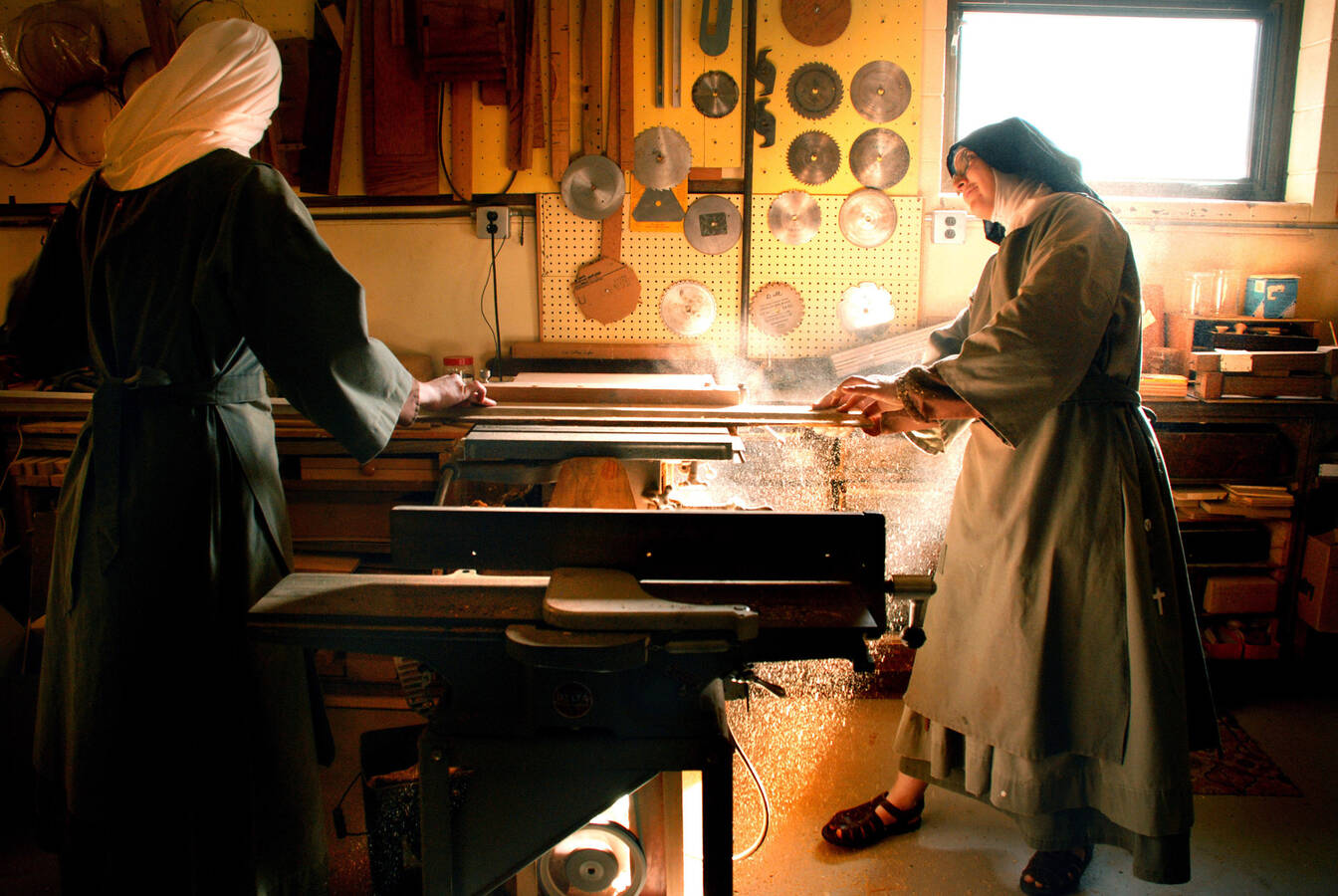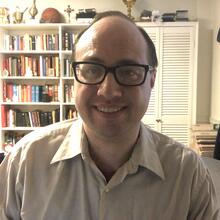When Alicia Torres graduated with a bachelor’s degree from Loyola University Chicago in 2007, she had $94,000 of debt from student loans. She also had $1,000 in credit card debt from personal expenses.
Alicia found herself living a lifestyle that had become common among young Catholic college graduates. Working happily at a low-paying job for the Archdiocese of Chicago, she was unable to pay off her student loans, as her salary barely covered basic living expenses like rent and food.
Meanwhile, God was calling her to another commitment in life, to a vocation she had begun to discern during her junior year of college. Alicia felt a growing desire for something greater than material possessions. But a lack of connection between her spiritual life and fiscal habits held her back. As she struggled with expenses that plunged her deeper into debt, she began to ponder where her life was headed.
“I knew I had to stop living in limbo and listen to that voice speaking in my heart,” Alicia wrote on her blog.
Alicia ultimately discerned a call to join a new Franciscan community dedicated to comforting the afflicted and preaching the Gospel in Humboldt Park, one of Chicago’s most distressed neighborhoods. In July 2008, after making an Ignatian four-day retreat to pray about it, Alicia resolved to pay off her debt and join the Franciscans, come hell or high water.
“From that point on, I never looked back, and the Lord continued to work miracle after miracle so that I could enter religious life,” says Sister Alicia.
Since the fledgling religious order of the Franciscans of the Eucharist of Chicago could not take on Alicia’s debt, she decided, with the help of friends, to develop the Nun Run Blog—a fundraising idea that solicited sponsorships for Alicia to run the city’s half marathon in 2009. As she slowly paid off her credit card bills, she set out to promote her “nun run,” hoping to attract benefactors to help pay off her debt. Alicia’s story was quickly picked up by media outlets around the world. Donations poured in at near-miraculous speed.
In autumn 2010, her debt finally paid off, Alicia gave away her wardrobe and other possessions. She professed first vows on Oct. 13, 2012, and her final vows three years later. Now she spends her days working with children, families and seniors on the West Side of Chicago while taking classes at Mundelein Seminary to prepare for teaching religion classes one day.
“I can never forget what the Lord has done for me, nor the generosity of countless men and women,” Sister Alicia wrote. “My story is a testimony not only to divine providence, but to the steadfast love of God Almighty.”
Vocations Delayed
As Sister Alicia’s story illustrates, the spiritual cost of debt manifests itself in at least two ways for young American Catholics today: It delays vocations, and it puts strains on the bonds of love within families and religious congregations. But her story also shows how God is with us in the midst of struggles and weaknesses.
According to a study published by Georgetown University’s Center for Applied Research in the Apostolate in January 2014, Sister Alicia is not the only one whose path to religious life was obstructed by financial debt. The survey polled 107 men and women who professed permanent religious vows in 2013. One in 10 religious brothers, seminarians, sisters and nuns reported that educational debt delayed their application for entrance to religious life by an average of two years. Although these numbers may not seem high, these religious men and women also had an average $31,100 in educational debt when they first applied for entrance to their religious institute—much more than their parents’ generation.
In 2012, CARA published a study for the National Religious Vocation Conference that gives an even clearer picture of the effects of educational debt on religious vocations. That report surveyed a total of 47,113 men and women religious with permanent vows, or approximately two thirds of all men and women religious in the United States. Unlike the 2014 report, this earlier survey also covered young Catholics who had inquired about a religious vocation, not just men and women who had taken vows. The study’s findings suggest that financial debt not only delayed some young Catholics from entering religious life but prevented many of them from applying at all, because either they or the religious institutes decided against it. Overall, religious institutes with at least one serious vocation inquirer in the previous 10 years reported to CARA that 32 percent of the inquirers had educational debt at the time of their first contact with the vocations office.
Religious institutes vary in their capacity to handle the debt of applicants. CARA found that slightly fewer than half of all formal applicants with educational debt were eventually accepted into candidacy or postulancy, as only four in 10 religious institutes took on the responsibility of paying off the educational debt of new members. Sister Alicia Torres may have been unusual in being delayed by debt from entering religious life; but many young Catholics, unable to pay off their debts, never even reach the point of entering.
An Illusory Crisis?
Despite these statistics, not everyone believes young people today are suffering unduly from financial debt or that social units like families and religious institutes are being unduly burdened.
In June 2014, the Brookings Institution released a study that said college debt levels have been relatively stable since 1989, calling into question the conventional wisdom that U.S. college students are now paying too much to enter a job market that cannot support them. The study reported that about one quarter of the increase in student debt since 1989 was caused by students’ seeking further education—especially graduate degrees—rather than by costlier undergraduate student loans. The average debt of borrowers with a graduate degree more than quadrupled, from just under $10,000 to more than $40,000. By contrast, the debt of borrowers with only a bachelor’s degree increased by a smaller margin, from $6,000 to $16,000.
But the Brookings survey goes back only to 1989 and does not provide an explanation for the real shift in college expenses that occurred in the previous two decades. In the 1980s, American four-year colleges hiked their tuition by astronomical rates, gradually making it impossible for young people to “pay their way through college” as their parents did. Although tuition hikes have slowed since 1989, they continue to outpace inflation, moving students even further from the possibility of a debt-free education.
Matthew Plomin, 36, a married Catholic father of five, is a debt analyst for Deutsche Bank in New York City. He says studies like the new Brookings survey, which he considers misleading, have led young Americans to underestimate the burdens of debt: “Debt has caused a statistically significant number of young people to delay household formation.” He adds: “The rise in educational debt is not solely attributable to the cost of tuition, but the wide and guaranteed availability of federally insured debt prevents individuals from making difficult choices regarding the lifestyle they choose to live while in college. Easily obtained debt allows for lavish lifestyles, increased materialism and less introspection about how to wisely use one’s resources.”
“To a large degree, colleges and universities are engaging in potentially predatory practices, encouraging maximum indebtedness with their aid policies, especially with ads promoting student loans,” Plomin suggests, adding, “The morality of bankruptcy notwithstanding, there is no legal remedy for student loans, making a heavy burden even heavier for those with severe financial difficulties.”
Family Strains
Apart from restricting life choices among young Catholics, debt also creates new relationship structures within their families based on guilt and co-dependence rather than on love.
Mark Shea, a Catholic author and blogger, says his own family has suffered from the strain of older generations continuing to support younger generations well into adulthood. “I’ve watched my kids struggle with debt,” Shea says. “It’s spiritually crushing and tremendously anxiety-producing, putting strains on marriages and families.” Shea also notes that the increased debt load of young Catholics contributes to ever-increasing work hours that keep spouses apart, keep parents away from their children and tear at the bonds of love so essential to Christian family and community.
“Middle-class wages have stagnated, and a lot of money goes to child care when both parents are working all the time,” Shea adds. “Civilization is only possible when you have enough leisure time to ‘screw around,’ which debt eats into by making people slaves to the economic machine.”
Shea and his wife have four children between the ages of 17 and 27, but they had no comparable experience of financial debt in their own youth. That is because college tuition costs were still relatively low in the late 1970s and early 1980s. When Shea started college in 1976 and graduated in 1983, after taking a couple of years off, his parents paid half the cost while he paid the other $4,500 by getting a job. With a total bill of about $9,000, he was able to graduate from college with no debt—unlike his children, who have had to take out loans.
“Debt eats into everything, and the system seems to be designed to create that,” says Shea. Far from finding a job that will pay for tuition, today’s college student is lucky to find a minimum-wage gig at the school library that will pay for a semester of transportation and food. If a young Catholic fails to find a job after college, he or she may ultimately end up back on mom’s couch, trapped in a spiritual and psychological funk as student loan bills start coming due.
Then again, there is always the prospect of another loan to attend graduate school, which at least delays the undergraduate loan payments and holds out the hope of better employment.
As the Catholic writer Hilaire Belloc predicted a century ago in The Servile State (1912), it is becoming increasingly apparent that our society “cannot endure” under the strains of financial insecurity and anxiety that capitalism deepens as it concentrates ownership in the hands of a few. But while the ailing system continues to tighten its grip on the working poor and middle class, there are perhaps signs of hope in the high debt levels that afflict the spiritual lives of young American Catholics today.
First, it puts them in solidarity with the rest of the world, where people suffer far more deeply. Second, it presents a challenge that will make them stronger people if they work with God’s help to overcome it. In his apostolic exhortation “The Joy of the Gospel,” Pope Francis condemned the self-satisfied complacency that allows us to ignore the plight of the poor, emphasizing that suffering often engenders compassion where prosperity creates only a “globalization of indifference.” Francis added: “The culture of prosperity deadens us; we are thrilled if the market offers us something new to purchase; and in the meantime all those lives stunted for lack of opportunity seem a mere spectacle; they fail to move us.”







